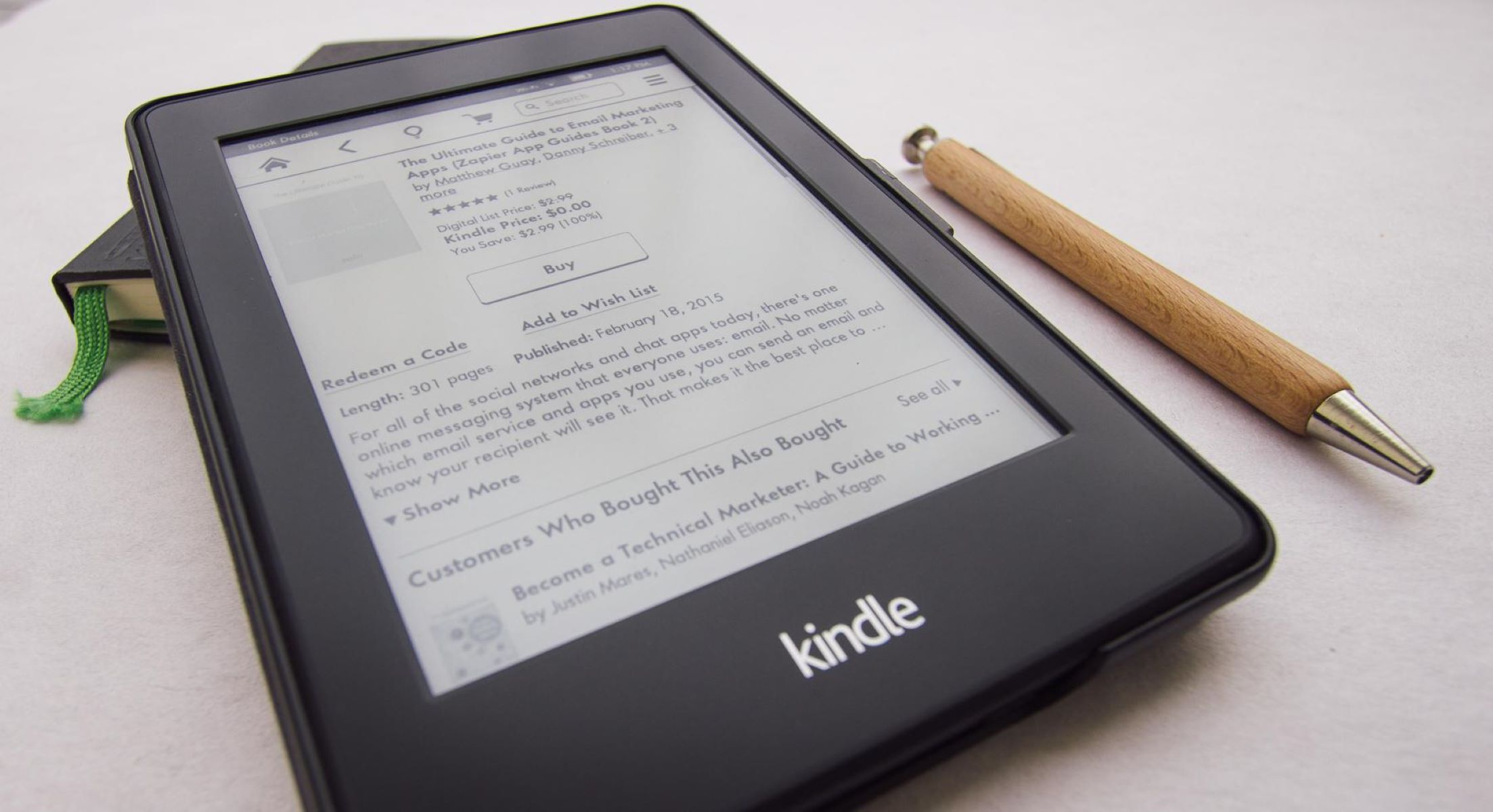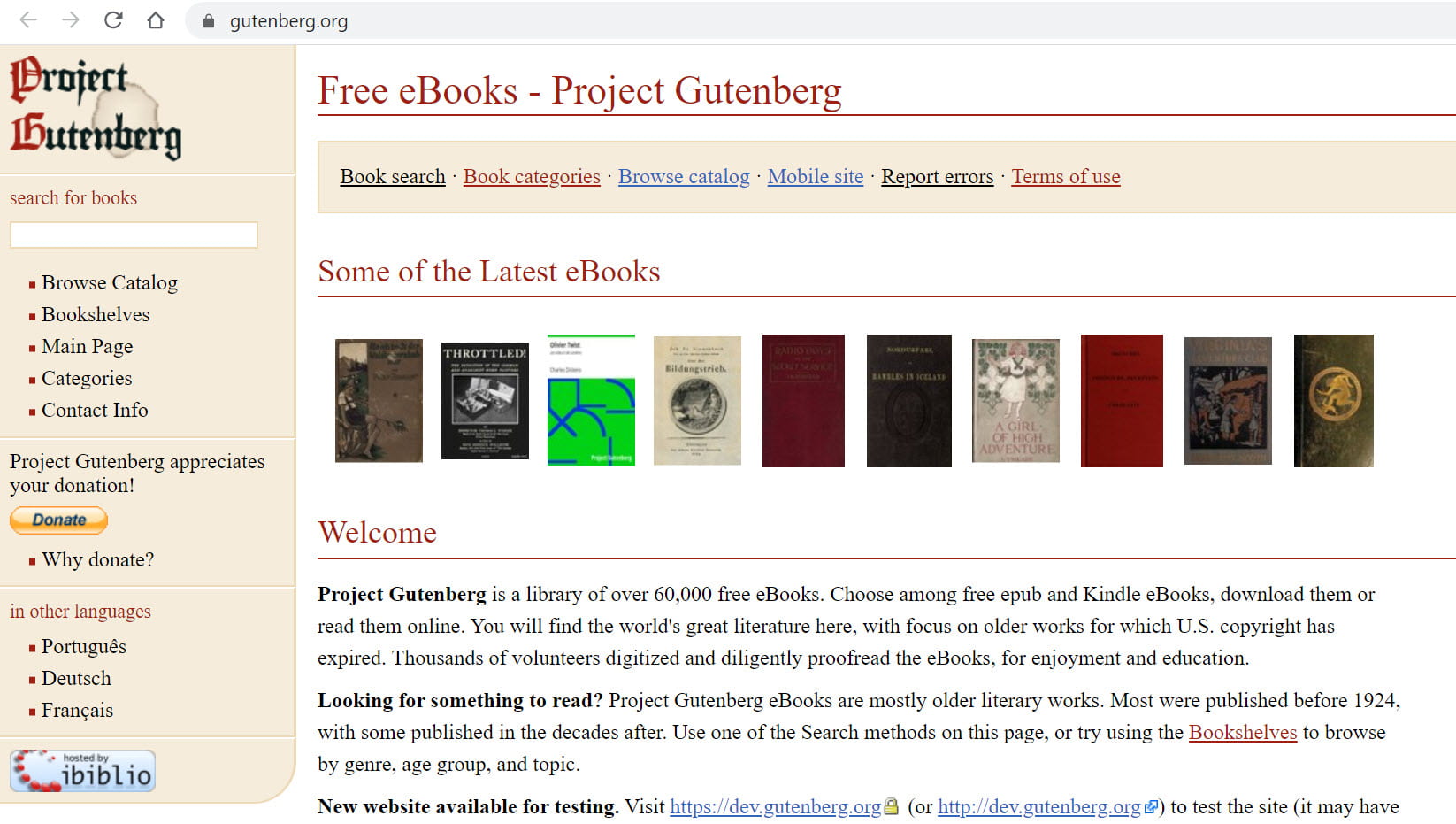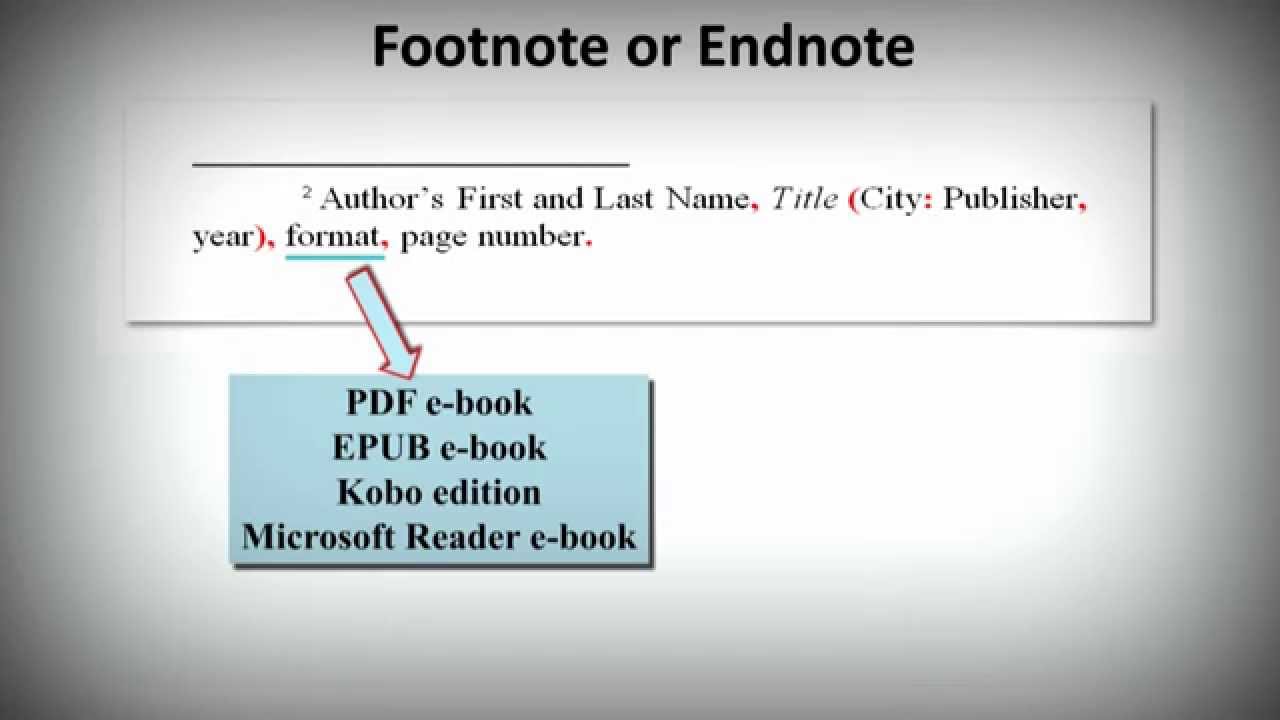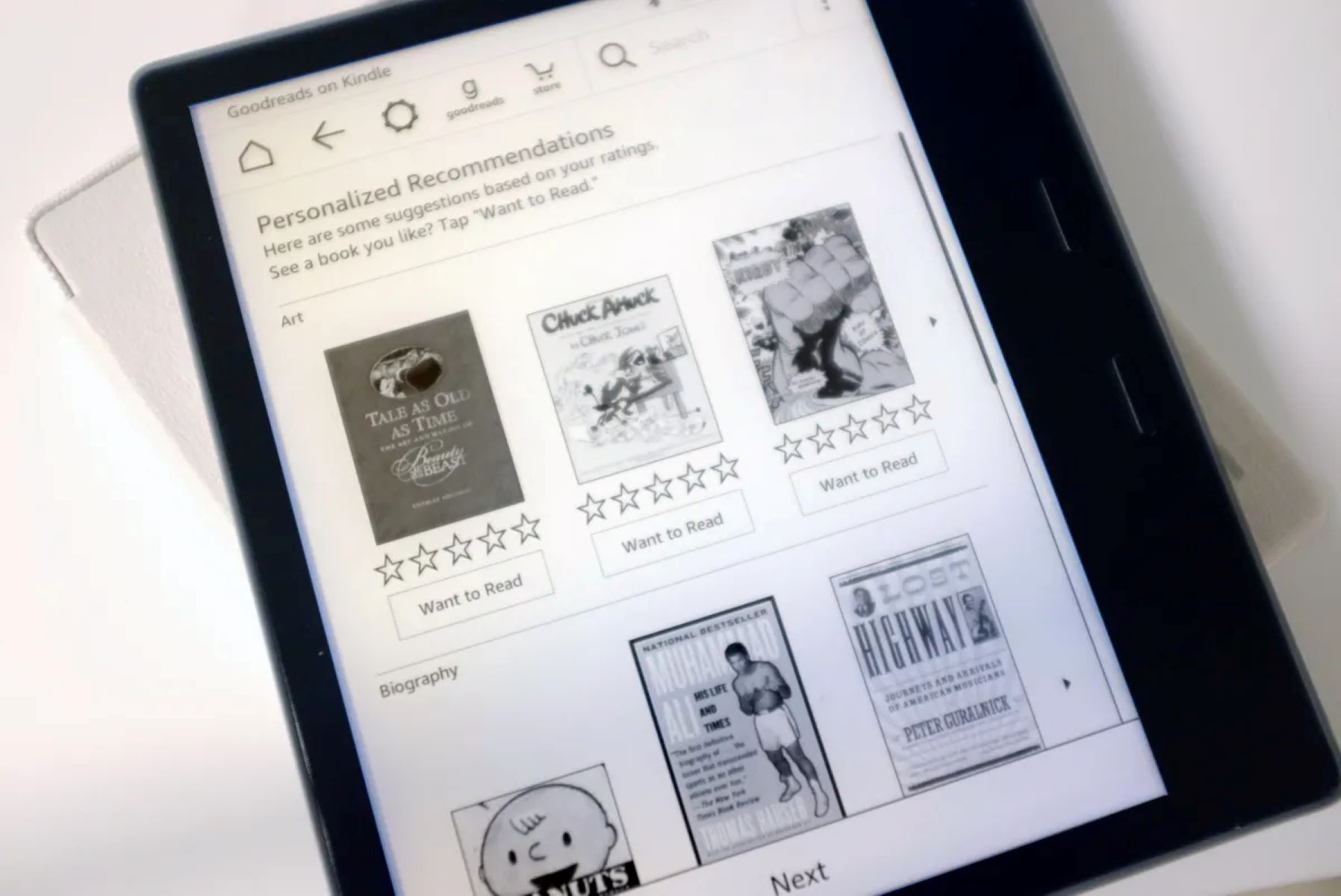Introduction
Welcome to the world of eBooks! With technology advancing rapidly, digital reading has become increasingly popular. eBooks offer a convenient and portable way to enjoy your favorite books, whether it’s a novel, a self-help guide, or a technical manual. In this article, we will explore the ins and outs of using eBooks, from choosing the right format to managing your eBook library and reading on different devices.
Whether you’re an avid reader or just getting started with eBooks, this guide will provide you with the information you need to make the most out of your digital reading experience. We’ll cover everything from finding and downloading eBooks to customizing the settings, annotating and highlighting, and troubleshooting common eBook problems. By the end of this guide, you’ll have all the tools and knowledge necessary to immerse yourself in the world of digital reading.
If you’ve never used an eBook before, don’t worry! The process is straightforward and user-friendly, making it accessible to readers of all ages and backgrounds. Many eBook platforms and devices offer intuitive interfaces that mimic the experience of reading a physical book, complete with page-flipping animations and adjustable font sizes.
Before we dive into the specifics, let’s take a moment to understand the advantages of eBooks. One of the primary benefits is the convenience they offer. With eBooks, you can carry an entire library wherever you go, eliminating the need to lug around heavy physical books. Additionally, eBooks often come at a lower price point than their printed counterparts, making them a cost-effective choice for book lovers.
Another advantage of eBooks is the ability to customize your reading experience. You can adjust the font size, style, and background color to suit your preferences, making reading more comfortable for those with visual impairments or other reading challenges. Many eBook platforms also provide features like highlighting, annotating, and searching for specific content, enhancing your reading and learning experience.
In this guide, we’ll cover the important aspects of using eBooks, including choosing the right format for your device, finding and downloading eBooks, managing your library, reading on different devices, customizing settings, annotating and highlighting, syncing eBooks across devices, and sharing them with others. By the end, you’ll be equipped with the knowledge to navigate the world of eBooks with ease and maximize your enjoyment of digital reading.
Choosing an eBook Format
When it comes to choosing an eBook format, it’s essential to consider compatibility with your reading device or application. There are several common eBook formats available, each with its advantages and limitations.
One of the most widely used eBook formats is ePub. ePub is a popular open standard format that is supported by a wide range of eReaders and reading apps, including Adobe Digital Editions, Apple iBooks, and Google Play Books. It offers a dynamic reading experience, allowing you to adjust the font size, style, and layout to suit your preferences. ePub is ideal for novels, non-fiction books, and other text-heavy publications.
If you own a Kindle device or use the Kindle app, you’ll likely encounter eBooks in the Kindle format (MOBI or AZW). This format is exclusive to Amazon and is specifically designed for use on Kindle devices. While the Kindle format is not as widely supported as ePub, it offers a seamless reading experience on Kindle devices, with features like Whispersync, which syncs your progress across devices.
Another popular format is PDF (Portable Document Format). PDFs are widely compatible and can be viewed on various devices using dedicated PDF reader apps or software. PDF is ideal for eBooks that consist of complex layouts, such as textbooks, graphic novels, or magazines, as it preserves the formatting and visuals of the original document. However, PDFs are not as flexible for adjusting font sizes and layouts compared to other formats.
In addition to these formats, there are proprietary eBook formats associated with specific platforms or devices. For example, iBooks Author is a format exclusive to Apple’s iBooks platform, while Kobo has its own format called KEPUB. These formats offer enhanced features and compatibility within their respective ecosystems.
When choosing an eBook format, consider the compatibility of the format with your reading device or app, as well as the features you require. If you use multiple devices or enjoy the flexibility to switch between different reading apps, opting for a universal format like ePub would be a wise choice. However, if you primarily use a Kindle device or app, the Kindle format may be the most suitable option for you.
It’s also worth noting that DRM (Digital Rights Management) may impact your format choices. DRM is a technology used to protect copyrighted content, and some formats may have DRM restrictions that limit the devices or apps on which they can be accessed. Ensure that the eBooks you choose are compatible with your preferred reading platform and device while considering any DRM limitations.
Finding eBooks Online
Finding eBooks online has never been easier, thanks to the vast array of platforms and websites dedicated to digital reading. Whether you prefer classic literature, best-selling novels, self-help books, or academic publications, there are numerous sources where you can discover and access eBooks.
One of the most popular platforms for finding eBooks is Amazon Kindle Store. With its extensive collection of eBooks across various genres, the Kindle Store offers a wide selection of both free and paid titles. The store is directly accessible from Kindle devices or can be accessed through the Kindle app on smartphones, tablets, and computers.
Another renowned platform is the Google Play Books store. With an extensive catalog, Google Play Books offers millions of eBooks in various genres. You can access the store through the Google Play Books app on Android and iOS devices or the web browser.
For readers seeking free eBooks, Project Gutenberg is a go-to source. Project Gutenberg is a digital library that offers over 60,000 free eBooks, including classic literature works that are in the public domain. These eBooks are available in various formats, such as ePub, Kindle, and HTML, making them compatible with different reading devices.
In addition to these platforms, there are numerous other online eBook retailers and platforms, such as Barnes & Noble’s Nook Store, Kobo, and Apple Books. These platforms provide a vast selection of eBooks for users of their respective devices or apps.
Aside from dedicated eBook platforms, you can also find eBooks on websites and digital libraries. Many universities and libraries have digital collections that include a wide range of academic and research publications. Websites like Open Library, ManyBooks, and Bookbub provide access to a large collection of both free and discounted eBooks.
Social media platforms and online forums can also be valuable resources for finding eBooks. Many authors and publishers offer free or discounted eBooks as promotions, and they often promote these deals through their social media accounts or online communities. Additionally, online book clubs and reading communities may recommend and provide links to eBooks that align with their reading preferences.
When searching for eBooks online, it’s helpful to use search engines, online marketplaces, and dedicated eBook search engines to narrow down your options. Keywords related to the genre, author, or title of the book can help you find specific eBooks more efficiently.
Remember to check the format compatibility of the eBook before downloading or purchasing it. Ensure that the eBook is available in a format suitable for your reading device or app. Additionally, check user reviews and ratings to get an idea of the quality and reader satisfaction of the eBook before making your selection.
With the vast availability of eBooks online, there is something for every reader’s taste and interest. Take advantage of these platforms, stores, and websites to explore and expand your digital library.
Downloading eBooks to Your Device
Once you’ve found the perfect eBook, the next step is to download it to your device for offline reading. Downloading eBooks is a straightforward process and can be done on various devices, including eReaders, smartphones, tablets, and computers. Let’s explore the steps to download eBooks to your device.
1. Determine the compatible format: Before downloading an eBook, ensure that it is available in a format supported by your reading device or app. Most platforms offer multiple format options, such as ePub, MOBI, or PDF. Select the appropriate format for your device to ensure compatibility.
2. Sign in and access your account: If you’re downloading an eBook from a platform or store, sign in to your account. This will enable you to view your library, manage your purchases, and have access to any previously downloaded eBooks.
3. Select the eBook: Locate the eBook you want to download. This can be done by browsing categories, using the search function, or exploring recommended titles. Once you’ve found the eBook, click on it to open the details page.
4. Check for price and availability: Some eBooks may require a purchase, while others may be available for free. Make sure to check the price and availability before proceeding with the download. If the eBook is free, you can simply click on the “Download” or “Get” button to initiate the download. If a purchase is required, follow the prompts to complete the transaction.
5. Choose the download location: Depending on your device, you may have the option to choose where the eBook is downloaded. Select a location that is easily accessible, such as the default library folder or a specific folder designated for eBooks.
6. Wait for the download to complete: Once you initiate the download, the eBook will begin to transfer to your device. The time it takes to complete the download will depend on factors such as the file size and the speed of your internet connection. During this process, it’s important to ensure that your device remains connected to the internet to avoid any interruptions.
7. Access the downloaded eBook: After the download is completed, you can access the eBook from your chosen location. Depending on your reading device or app, the eBook may automatically appear in your library, or you may need to navigate to the specific folder where it was downloaded.
8. Enjoy reading offline: With the eBook successfully downloaded to your device, you can now enjoy reading it offline at your convenience. Open your preferred reading app or device, locate the eBook in your library, and start reading.
It’s important to note that some platforms and devices offer the option to sync your eBooks across multiple devices. This allows you to access your downloaded eBooks on different devices while maintaining your reading progress and annotations. If you have multiple devices connected to the same account, ensure that the sync feature is enabled for a seamless reading experience across devices.
By following these steps, you can easily download eBooks to your device and embark on an immersive reading experience whenever and wherever you desire.
Transferring eBooks to an eReader or Tablet
Once you have downloaded eBooks to your computer or smartphone, you may want to transfer them to your dedicated eReader or tablet for a more immersive reading experience. Transferring eBooks to an eReader or tablet is a straightforward process that allows you to enjoy your digital library on a dedicated device. Let’s explore the steps to transfer eBooks to your eReader or tablet.
1. Connect your device: Use a USB cable to connect your eReader or tablet to your computer. Ensure that both devices are powered on and recognized by the computer. Depending on your device, you may need to unlock it and select the appropriate connection mode, such as file transfer or USB storage mode.
2. Locate your eBook files: Open the folder on your computer where you saved the downloaded eBooks. In most cases, eBooks are saved in a specific folder or designated location, such as the “Downloads” or “eBooks” folder.
3. Drag and drop the eBook files: Select the eBook files you want to transfer and drag them to the connected eReader or tablet folder. This folder is usually displayed as a storage device or external drive on your computer. Alternatively, you can copy and paste the eBook files from your computer to the eReader or tablet folder.
4. Safely eject the device: Once the transfer is complete, safely eject or disconnect the eReader or tablet from your computer. This ensures that any pending data transfers are completed, and it prevents data corruption or loss.
5. Open the eBook on your device: On your eReader or tablet, navigate to the library or file manager app. Depending on your device and reading app, the location or method to access eBooks may vary. Look for the folder or section where your transferred eBooks are stored. The eBooks should now appear in your library or file manager.
6. Start reading: Once you locate the transferred eBooks on your eReader or tablet, simply tap on the eBook cover to open it and start reading. Your device’s reading app should provide a comfortable reading experience, allowing you to customize settings such as font size, page layout, and background color to suit your preferences.
If you encounter any issues with file compatibility or if your device does not support a particular eBook format, you may need to convert the eBooks to a format compatible with your device. There are various eBook conversion tools and software available that can help you convert eBook formats, ensuring compatibility with your eReader or tablet.
It’s worth noting that some eReaders and tablets have built-in wireless connectivity, allowing you to directly download eBooks onto the device without the need for a computer. You can connect the device to a Wi-Fi network and access eBook stores or platforms directly from the device’s interface.
By following these steps, you can easily transfer eBooks from your computer to your eReader or tablet, opening up a world of digital reading possibilities.
Managing Your eBook Library
As your collection of eBooks grows, it becomes important to have effective methods for managing and organizing your digital library. Proper management allows for easy access to your favorite titles and helps you stay organized. Let’s explore some tips for effectively managing your eBook library.
1. Use a library management app: Consider using a library management app or software to organize and categorize your eBooks. These apps allow you to create virtual shelves or collections, add tags or labels, and sort your eBooks based on criteria such as genre, author, or series. Some popular library management apps include Calibre, Alfa eBooks Manager, and Calio.
2. Create folders on your device: Organize your eBooks by creating folders on your reading device or computer. Group eBooks by genre, author, or any other classification that makes sense to you. This way, you can easily locate specific eBooks when you want to read them.
3. Tag or label your eBooks: Many reading apps and software allow you to add tags or labels to your eBooks. Utilize this feature to categorize your eBooks. For example, you could add tags like “Favorites,” “To Be Read,” or “Completed” to facilitate quick navigation and organization.
4. Maintain a consistent naming convention: Develop a naming convention for your eBook files that makes it easy to identify and locate specific titles. Consider including the author’s name, book title, and series information if applicable. This helps ensure that your eBook files are organized and easily recognizable.
5. Delete unwanted eBooks: Regularly review your eBook library and remove any titles that you no longer want or need. This helps declutter your library and free up storage space. Be mindful of the platform’s policies regarding deletion, as some platforms may allow you to re-download deleted eBooks in the future.
6. Backup your eBook library: To protect your eBook collection from loss or device failure, it’s important to create backups. Consider backing up your eBooks to a cloud storage service, an external hard drive, or another device. This way, even if your device gets lost or damaged, you can easily restore your library on a new device.
7. Sync across devices: If you use multiple reading devices or apps, take advantage of syncing features to keep your eBook library consistent across all devices. This ensures that your reading progress, bookmarks, and annotations are synced, allowing you to seamlessly switch between devices without losing your place in a book.
8. Take advantage of collections or shelves: Many eReaders and reading apps allow you to create collections or shelves within your library. You can group eBooks by genres, authors, or any other criteria you prefer. This makes it easier to locate and browse eBooks within specific categories.
By implementing these management strategies, you can ensure that your eBook library remains organized, accessible, and enjoyable to browse. Whether you have a small collection or a vast digital library, effective management practices save time and enhance your digital reading experience.
Reading eBooks on Different Devices
One of the advantages of eBooks is the ability to read them on a variety of devices, allowing for flexibility and convenience. Whether you prefer dedicated eReaders, tablets, smartphones, or computers, there are multiple options for accessing and reading your eBooks. Let’s explore how to read eBooks on different devices.
1. Dedicated eReaders: Devices like Amazon Kindle, Kobo, and Barnes & Noble Nook are specifically designed for reading eBooks. These eReaders provide an optimal reading experience with features such as e-ink displays, adjustable font sizes, and long battery life. Simply download the compatible eBook format and transfer it to your eReader, then open the eBook using the built-in reading app.
2. Tablets: Tablets, such as iPad, Android tablets, and Microsoft Surface, offer the versatility of a larger screen and the functionality of a mobile device. Many tablets have pre-installed reading apps, such as Apple Books or Google Play Books, which allow you to easily access and read your eBooks. You can download eBook apps from various platforms and stores, or transfer eBooks from your computer to your tablet for offline reading.
3. Smartphones: With the convenience of always being with you, smartphones are a popular choice for on-the-go reading. Smartphone reading apps, such as Kindle, Google Play Books, or Apple Books, provide a portable and accessible reading experience. Simply download the eBook app, sign in to your account, and access your eBooks directly from your phone. Many reading apps offer features like adjustable font sizes, night mode, and syncing across devices.
4. Computers: If you prefer reading on your computer, there are several options available. You can use dedicated eBook reading software like Adobe Digital Editions or Calibre, which allow you to manage and read eBooks in various formats on your computer. Many eBook platforms also offer web-based readers, enabling you to read eBooks directly in your web browser without the need for additional software.
5. Reading apps: Some platforms, such as Kindle, Google Play Books, or Apple Books, offer reading apps that are compatible across multiple devices. This means you can start reading on one device and seamlessly continue on another, with your progress synced. Simply download the reading app from the respective app store, sign in to your account, and access your eBooks across devices.
Regardless of the device you choose, it’s important to customize your reading settings to optimize your reading experience. Adjust the font size, style, and background color to suit your preferences. Many reading apps also offer features like highlighting, note-taking, and dictionary look-up to enhance your reading and learning experience.
Additionally, consider utilizing cloud storage or syncing features to ensure your eBooks and reading progress are accessible across all devices. This eliminates the need to manually transfer or download eBooks on each device and ensures a consistent reading experience.
With the wide range of devices available, reading eBooks has never been more accessible. Choose the device that suits your preferences and lifestyle, and embark on a digital reading journey wherever and whenever you desire.
Customizing eBook Settings
Customizing eBook settings allows you to personalize your reading experience and tailor it to your preferences. Whether it’s adjusting the font size, changing the background color, or enabling special reading features, eBook platforms and reading apps provide various options to make your reading experience more enjoyable and comfortable. Let’s explore how you can customize eBook settings.
1. Font customization: Most eBook platforms and reading apps allow you to adjust the font size and style to suit your reading preferences. Whether you prefer a larger font size for easier reading or a specific font that is easier on your eyes, explore the settings options to find the best fit for you.
2. Background color and theme: Many reading apps offer the option to customize the background color, allowing you to read in a way that is most comfortable for your eyes. You can choose from white, sepia, or even a dark mode, depending on your personal preference and the lighting conditions in which you’re reading.
3. Screen brightness: On devices with adjustable screen brightness, you can modify the brightness settings to ensure optimal visibility and reduce eye strain. Increase the brightness in well-lit environments and lower it in dimly lit environments for a more comfortable reading experience.
4. Line spacing and margins: Some reading apps allow you to adjust the line spacing and margins of the text. Increasing the line spacing can make the text more readable, especially for individuals with visual impairments or reading difficulties. Adjusting the margins provides better control over the layout and can enhance readability.
5. Dictionary and translation: Take advantage of built-in dictionary and translation features to enhance your understanding of the text. Many eBook platforms offer a quick tap-to-define feature that provides instant definitions of unfamiliar words. Some apps also allow you to translate words or phrases into different languages, expanding your language skills while reading.
6. Reading progress and bookmarks: Keep track of your progress in eBooks by utilizing reading progress indicators or bookmarks. Many reading apps automatically save your reading progress, allowing you to easily resume where you left off. You can also create bookmarks to mark specific pages or sections that you want to revisit later.
7. Special reading features: Explore reading options like night mode, which switches the background to a darker color for more comfortable reading in low-light conditions. Some platforms also offer reading themes or specialized modes, such as scrolling or continuous reading mode, for a unique reading experience.
8. Accessibility options: eBook platforms and reading apps often include accessibility features to cater to a wide range of users. These features may include screen reader compatibility, text-to-speech functionality, and adjustable reading speeds. To ensure an inclusive and accessible reading experience, explore these accessibility options if needed.
Remember that available customization options may vary depending on the eBook platform, reading app, or device you are using. Take some time to explore the settings menu and experiment with different options to find the settings that work best for you.
By customizing eBook settings, you can create a reading experience that is tailored to your preferences, making your digital reading journey more enjoyable and comfortable.
Annotating and Highlighting in eBooks
Annotating and highlighting in eBooks allows you to actively engage with the text, making notes, marking important passages, and enhancing your reading experience. Digital reading platforms and reading apps provide tools to annotate and highlight eBooks, offering a convenient and efficient way to interact with the content. Let’s explore how you can annotate and highlight in eBooks.
1. Highlighting text: Most eBook platforms and reading apps allow you to highlight specific portions of the text. To highlight a passage, simply select the desired text and choose the highlight option. This feature is useful for marking important passages, memorable quotes, or sections you want to revisit later.
2. Color coding: Color coding your highlights can help you categorize and organize information more effectively. Assign different colors to different types of highlights, such as yellow for key ideas, green for quotes, or blue for vocabulary. This visual distinction makes it easier to navigate and review your annotations later.
3. Adding notes: Alongside highlighting, you can add personal notes or comments to specific sections of the eBook. This feature allows you to jot down your thoughts, questions, or reflections as you read. Notes can be used to summarize important points, offer critical analysis, or engage in a dialogue with the author’s ideas.
4. Bookmarking: In addition to highlighting and annotating, bookmarking is a valuable tool for marking specific pages or sections that you want to revisit later. This feature is particularly useful for referencing crucial information, revisiting favorite passages, or keeping track of sections you need to review for studying or research purposes.
5. Syncing and cloud storage: Many eBook platforms and reading apps offer syncing capabilities, allowing you to access your annotations and highlights across different devices. If you make an annotation or highlight on one device, it will automatically sync to another device connected to the same account. This feature ensures that your annotations are accessible and up to date wherever you choose to read.
6. Exporting and sharing: Depending on the platform or reading app, you may have the option to export or share your annotations and highlights. This is particularly useful for academic or research purposes, as you can compile your annotations into a separate document or share them with colleagues for collaboration and discussions.
7. Searching annotations: As you accumulate more annotations and highlights, searching within them becomes crucial. Many eBook platforms and reading apps provide search functionalities that allow you to search specific terms or keywords within your annotations and highlights. This helps you find relevant sections quickly and saves time when revisiting specific information.
8. Reviewing and managing annotations: To manage your annotations effectively, utilize the annotation manager within your eBook platform or reading app. This feature allows you to view all your highlights, annotations, and bookmarks in one place, making it easier to navigate and organize your notes.
Annotating and highlighting in eBooks not only enhances your reading experience but also serves as a powerful tool for studying, research, or critical analysis. By actively engaging with the text, you can deepen your understanding, make connections, and create a personalized reading experience that is enriched by your own thoughts and insights.
Searching for Specific Content in eBooks
One of the advantages of reading eBooks is the ability to conduct fast and efficient searches for specific content within the text. Instead of flipping through pages or scrolling endlessly, eBook platforms and reading apps provide search functionalities that allow you to quickly find specific words, phrases, or topics within an eBook. Let’s explore how you can search for specific content in eBooks.
1. Utilize the search function: Most eBook platforms and reading apps have a search bar or a dedicated search function. Locate the search field within the app or platform and enter the keyword, phrase, or topic you want to search for. Press enter or tap on the search button to initiate the search.
2. Choose search options: Depending on the eBook platform or reading app, you may have additional search options to refine your search. These options can include searching within the current page, the entire eBook, or a specific chapter or section. Specify the search scope to focus on the relevant content.
3. Review search results: After initiating the search, the eBook platform or reading app will display a list of search results. This list typically includes the occurrences of the search term along with some context. Some platforms highlight the search term within the text, making it easier to identify.
4. Navigate to search results: To view a specific search result, simply click or tap on it. The eBook platform or reading app will take you directly to the relevant page or section where the search term appears. This allows you to access the specific content you were searching for without the need to manually browse through the eBook.
5. Use advanced search features: Depending on the eBook platform or reading app, you may have access to advanced search features. This can include options such as case sensitivity, exact phrase search, or boolean operators (AND, OR, NOT). Familiarize yourself with these features to refine and optimize your search results.
6. Save or bookmark search results: If you come across a search result that is particularly relevant or important, consider saving or bookmarking it for future reference. This allows you to easily access the specific content whenever you need it, without having to repeat the search process.
7. Combine search with annotation and highlighting: Enhance your research and study capabilities by combining search with annotation and highlighting features. While conducting a search, you can also highlight or annotate the relevant content to refer back to it later. This integration between searching and annotating helps you organize and retain important information efficiently.
8. Consider metadata search: Some eBook platforms or reading apps allow you to search within the metadata of eBooks, such as title, author, or publication information. This can be useful if you’re looking for a specific book or author but don’t remember the exact content within the eBook.
By harnessing the power of the search function in eBook platforms and reading apps, you can efficiently locate specific content within eBooks. This saves time, helps you find relevant information quickly, and enhances your overall reading and research experience.
Syncing eBooks Across Devices
Syncing eBooks across devices is a convenient feature that allows you to access your eBook library seamlessly from different devices. Whether you switch between a smartphone, tablet, eReader, or computer, syncing ensures that your reading progress, annotations, and bookmarks stay consistent across all your devices. Let’s explore how you can sync eBooks across devices.
1. Create an account: To enable syncing, you will typically need an account with the eBook platform or reading app. Sign up for an account if you haven’t already, and make sure to use the same account on all devices where you want to sync your eBooks.
2. Enable syncing: Within the settings or account preferences of your eBook platform or reading app, locate the syncing option. Ensure that the syncing feature is enabled for your account. This allows your eBook platform or reading app to connect and synchronize data across devices.
3. Connect your devices: Install the eBook platform or reading app on each device you want to sync, and sign in to your account. Make sure all devices are connected to the internet, as syncing requires an active internet connection.
4. Sync settings: Some eBook platforms or reading apps offer specific options to customize syncing settings. For example, you may be able to choose whether to sync annotations, bookmarks, or reading progress. Explore these settings to ensure syncing is tailored to your preferences.
5. Start reading: Once your devices are connected and synced, you can start reading on any device with your eBook library accessible. Open the eBook platform or reading app on a device, and you will find your entire library, as well as your reading progress and annotations, available and up to date.
6. Syncing progress and bookmarks: As you move between devices, your reading progress and bookmarks will be synced in real-time. This means you can start reading on one device and seamlessly continue where you left off on another device without losing your place in the eBook.
7. Annotations and highlights: Syncing also ensures that your annotations and highlights are consistent across devices. Any notes or highlights you make on one device will be available on other devices where you have the same eBook and syncing enabled.
8. Verify syncing: To ensure that syncing is functioning correctly, periodically check that your eBooks, reading progress, annotations, and bookmarks are updated across all devices. If you encounter any syncing issues, verify your internet connection, sign in to your account again, or check the syncing settings on each device.
9. Manage storage space: Keep in mind that syncing may require storage space on your devices, especially if you have a large eBook library. Regularly review and manage your eBook collection to ensure you have sufficient storage space available for syncing and offline reading.
By utilizing the syncing feature, you can seamlessly switch between devices and pick up where you left off in your eBooks. This flexibility allows you to enjoy your reading experience without interruptions, regardless of the device you choose to use.
Sharing eBooks with Others
Sharing eBooks with others allows you to spread the joy of reading and discuss your favorite titles with friends, family, or colleagues. While the process of sharing eBooks will depend on the platform and its specific policies, there are several common ways to share eBooks with others. Let’s explore how you can share eBooks with others.
1. Family Sharing: Some eBook platforms and reading apps offer family sharing features. This allows you to share your eBooks with members of your designated family group. They can access and read the shared eBooks on their own devices, creating a shared digital library experience for your household.
2. Lending: Certain eBook platforms and apps allow you to lend specific eBooks to others for a limited time. The lending feature typically requires the borrower to have their own account with the same eBook platform or app. Once the eBook is lent, the recipient can access and read it during the lending period.
3. Library lending: Many public libraries now offer eBooks as part of their digital collection. By signing up for a library membership, you can borrow eBooks from their digital library using specialized library apps. The borrowing process usually involves checking out the eBook for a specific duration, after which it automatically becomes unavailable.
4. Sharing accounts: Some eBook platforms and reading apps allow you to share your account credentials (username and password) with trusted individuals, such as close friends or family members. This enables them to log in and access your eBook library on their own devices. However, be cautious and only share your account information with those you trust, as this grants them full access to your account.
5. Gift eBooks: Depending on the eBook platform or app, you may have the option to gift specific eBooks to others. This allows you to purchase an eBook and send it as a gift directly to their email address or account. They can then redeem the gift and download the eBook to their device.
6. Loan physical eReaders: If you own a physical eReader device, you can lend it to others along with specific eBooks you want to share. This is a great option for introducing someone to the benefits of eReaders while allowing them to explore a selection of eBooks you love.
7. Discuss and recommend: Even if you cannot directly share eBooks, you can still engage in meaningful discussions and recommendations. Share your thoughts and impressions about eBooks with friends, family, or online communities. Create reading groups or book clubs where you can collectively read and discuss eBooks, fostering a sense of community and camaraderie.
Remember to respect copyrights and the terms of use for each eBook. Sharing eBooks should only be done within the boundaries established by the platform or copyright holder. Additionally, some eBooks may have digital rights management (DRM) restrictions that limit sharing options.
By sharing eBooks, you can foster a love for reading, spark interesting conversations, and introduce others to new authors and genres. Whether through formal lending features or informal discussions, sharing eBooks enhances the social aspect of reading and allows you to connect with others over your shared literary experiences.
Organizing and Categorizing eBooks
As your eBook collection expands, organizing and categorizing your eBooks becomes essential for easy navigation and efficient management. By setting up a systematic organization system, you can quickly locate specific eBooks, keep track of your reading progress, and create a well-structured digital library. Let’s explore how you can effectively organize and categorize your eBooks.
1. Create folders or collections: Utilize the folder or collection feature provided by your eBook platform or reading app. Create separate folders or collections based on genres, authors, or any other classification that makes sense to you. This allows you to group similar eBooks together and provides a logical structure to your library.
2. Sort by author or title: Consider sorting your eBooks by author or title. This method simplifies finding a specific book or author in your library. Alphabetical sorting helps maintain a consistent order and ensures that you can easily locate and access your eBooks.
3. Tagging and labeling: Many eBook platforms and reading apps offer the option to add tags or labels to your eBooks. Take advantage of this feature to assign relevant keywords or descriptive labels to your eBooks. This allows for quick searches and makes it easier to locate specific eBooks based on specific criteria.
4. Separate read and unread eBooks: Keep track of your read and unread eBooks by creating separate categories or using special tags. This helps you identify which books you have already read and those you are yet to explore. You can also consider adding bookmarks or annotations to mark where you left off in each eBook.
5. Series organization: If you have a collection of eBooks that belong to a series, consider grouping them together within your library. This makes it easier to follow the chronological order of the series and ensures you can access the next book in the series without any confusion.
6. Personalized virtual shelves: Some eBook platforms or reading apps allow you to create virtual shelves within your library. These shelves can represent categories such as favorites, recommendations, or specific themes. You can customize these virtual shelves to suit your reading preferences and create a more visually appealing and organized library.
7. Multiple libraries: If you have a vast eBook collection, consider creating multiple libraries or accounts within your eBook platform or reading app. This allows you to separate eBooks into different categories or genres, making it easier to navigate and manage specific subsets of your library.
8. Regular maintenance: Regularly review and update your eBook organization system. Remove or archive eBooks that you no longer need or have already read. Reevaluate your categorization system and make necessary adjustments as your collection grows and your reading preferences evolve.
By implementing an organized structure and categorization system for your eBooks, you can efficiently manage your library, save time searching for specific titles, and enhance your overall reading experience.
Troubleshooting Common eBook Problems
While eBooks offer a convenient and digital reading experience, occasional technical issues can arise. Understanding how to troubleshoot common eBook problems can help you overcome obstacles and continue enjoying your digital reading journey. Let’s explore some common eBook problems and how to address them.
1. Downloading issues: If you encounter difficulties downloading an eBook, double-check your internet connection. Ensure that you have a stable internet connection and try again. If the issue persists, check if there are any compatibility issues between the eBook format and your device or reading app.
2. File format compatibility: Make sure the eBook format is compatible with your device or reading app. Some eBooks may require specific software or apps to be accessed. If you encounter compatibility issues, consider converting the eBook to a supported format using eBook conversion tools or software.
3. Corrupted or incomplete files: If you encounter errors when opening or accessing an eBook, it may be due to a corrupted or incomplete file. Try re-downloading the eBook from the original source or source an alternative copy from a different platform or store.
4. Slow performance or freezing: If your reading app or device experiences slow performance or freezes, close and restart the app or device. Clear the cache or temporary files of the app or device to free up storage space. If the issue persists, check for any available updates for your reading app or device, as updated versions often resolve performance issues.
5. DRM issues: Digital Rights Management (DRM) restrictions can sometimes cause problems with accessing or transferring eBooks. Ensure that you are using the correct account or credentials associated with the DRM-protected eBook. Verify that the device or reading app you are using is authorized to access and read the specific DRM-protected eBook.
6. Missing or misplaced annotations: If your annotations, bookmarks, or highlights within an eBook are missing or misplaced, check if you are signed in to the correct account. Make sure you are accessing the eBook from the same account or device where the annotations were made. Additionally, ensure that you have sync settings enabled to synchronize your annotations across devices.
7. Battery life and device performance: If you notice decreased battery life or device performance while reading eBooks, consider adjusting your device settings. Dimming the screen brightness, disabling unnecessary background applications, or putting your device in airplane mode can help preserve battery life and optimize device performance.
8. Device-specific issues: Different devices may have specific quirks or issues when it comes to reading eBooks. Consult device-specific user guides, forums, or customer support to troubleshoot any device-related problems you may encounter, such as screen display issues or connectivity problems.
If you continue to experience issues despite troubleshooting, reach out to the customer support of the eBook platform, reading app, or device manufacturer. They can provide further assistance and guidance specific to your situation.
By understanding and addressing common eBook problems, you can overcome technical challenges and continue enjoying your digital reading experience uninterrupted.
Conclusion
In conclusion, eBooks have revolutionized the way we read and engage with content. The ability to access vast libraries, customize settings, and read on different devices offers convenience and flexibility. By following the steps outlined in this guide, you can make the most of your eBook experience.
From choosing the right eBook format to finding eBooks online, downloading and transferring them to your preferred devices, managing your eBook library effectively, and customizing settings to suit your reading preferences – each step plays a crucial role in enhancing your digital reading journey.
Additionally, annotating and highlighting important passages, searching for specific content, and syncing eBooks across devices allow for a more immersive and interactive experience. Sharing eBooks with others and engaging in discussions further enriches your reading experience and connects you with a wider literary community.
While occasional troubleshooting may be necessary for technical difficulties or compatibility issues, understanding how to address common eBook problems ensures a smooth reading experience.
So, embrace the world of eBooks and delve into the vast digital libraries available to you. Enjoy the convenience, portability, and customization options that eBooks offer. Immerse yourself in the words, ideas, and stories contained within these digital pages, and enrich your reading experience in ways that were once unimaginable.
Now, it’s time to embark on your own digital reading adventure and unlock the vast world of knowledge and entertainment that eBooks provide. Happy reading!

























